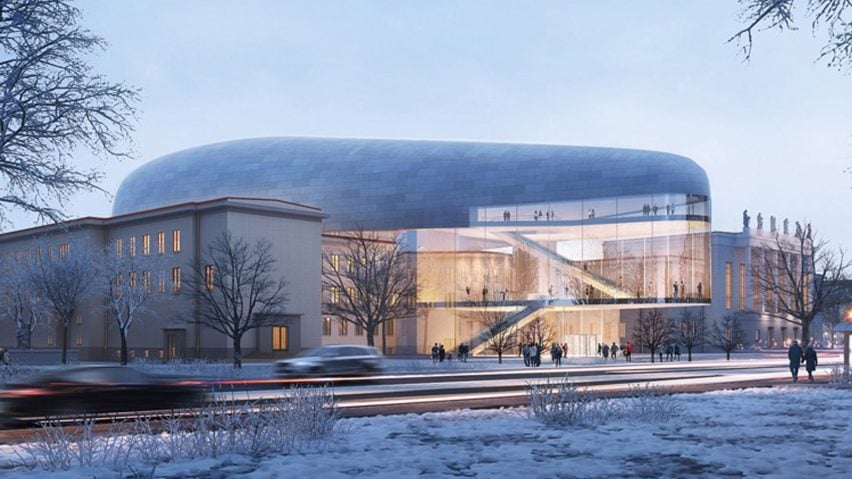A zinc-clad concert hall by Steven Holl Architects and Architecture Acts will cantilever over the 1960s modernist House of Culture in Ostrava, Czech Republic.
The competition-winning design features a curving irregular form covered in part with panels of zinc, opening in places with glazed walls that reveal maple-wood interiors.
The House of Culture was built by Czech modernist architect Jaroslav Fragner in 1961 and has a facade clad in travertine and ceramic tiles, with large columns on the front facade.
Steven Holl Architects and Architecture Acts' concert hall complex will be built on both sides of one of the House of Culture's wings.
The auditorium will be built at the rear of the complex, facing the park, while a glazed entrance lobby will be cantilevered over a square at the front of the building. The two elements will be connected above the existing building with a large foyer space.
The 1,300 seater concert hall will be shaped like a "perfect acoustic instrument in its case", said the architecture studios. It will have a wide base at the rear – behind the House of Culture – tapering to a more slender neck facing the road.
A shell of zinc panels will form the "case", which opens in places to reveal the interior, which will be clad in maple wood.
Other architecture projects in the Czech Republic with striking facades include a sports hall covered in fish scale-like aluminium panels, and a furniture showroom covered in black plastic chairs.
Six out of seven jury members supported this design for the Ostrava concert hall, which will provide a new performance space for the Janáček Philharmonic Orchestra.
Nagata Acoustics is collaborating with the architecture studios to design the performance space.
Architecture Acts was founded in Prague by Hana Petrik and Martin Kropac. American architect Steven Holl founded his practice, which has offices in New York and Beijing, in 1976.
Recent projects from the studio include plans for an office building in Beijing with swooping glazed roofs, and a pair of towers connected by a pair of plant-filled bridges for Shenzhen.

